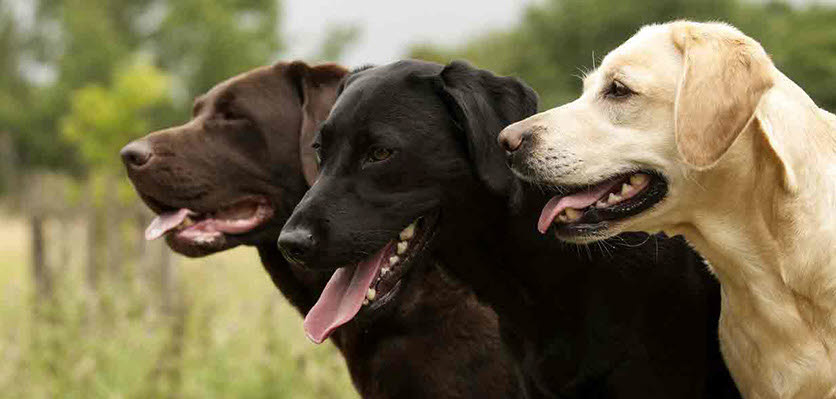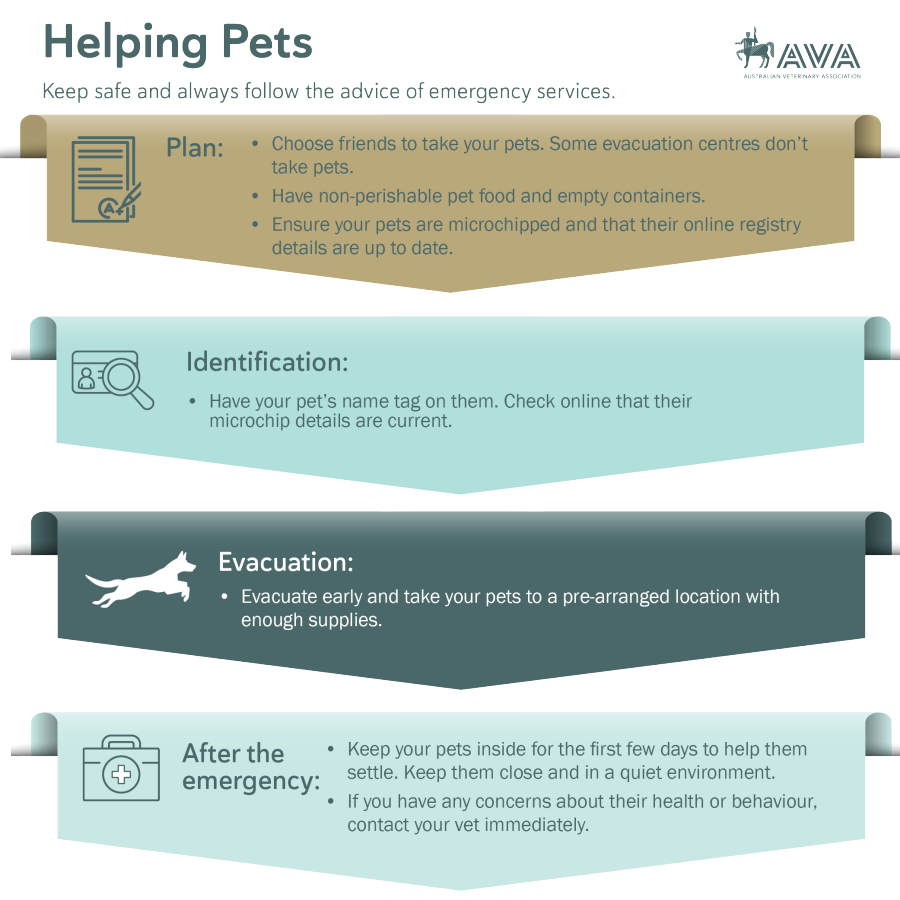Information for pet owners

Australia regularly experiences heavy rain and flooding, as well as cyclones, extreme heat and bushfires. It’s always a good time to prepare a disaster plan for pets in Australia. Preparing a plan ahead of time can ensure you don’t get caught out when a natural disaster strikes. Remember our four key points to ensure your pets are prepared for an emergency.
1. Disaster plan
Just as you should develop an emergency plan for you and your family, ensure you have a disaster plan which incorporates your pets. Plan for several days without food or water, so ensure you always have enough non-perishable food in waterproof containers, drinking water, kitty litter and any essential pet medications in the event of an evacuation or stranding. Always decide ahead of any emergency if you will stay or go, and make sure your pet is included in these plans. Many evacuation centres do not take pets, so consider nominating some friends who could take you and your pets if needed.
2. Pet identification
In case you get separated from your pets, ensure their identification is current and visible. Although all dogs and cats should be microchipped, and these details kept current, it’s also important to have a name tag on your pet’s collar with your contact details, so your pets can be quickly reunited with you. Check your pet’s microchip details are up-to-date online. If you’ve forgotten your pet’s microchip number, or you can’t remember which database they are registered on, call your local council or veterinary clinic who will be able to point you in the right direction.
3. Evacuating with pets
If you ever need to evacuate from your property, it’s likely to be a very stressful and scary time. Plan well ahead of any evacuation, particularly if you have pets. Take your pets with you to your prearranged location, such as boarding kennels or a friend’s house. Ensure you have their cages and supplies readily available and keep your pets in the house with you just before evacuation to prevent them from running away. If you have horses, try to evacuate them well ahead of time to a prearranged location. If in doubt, it’s always better to be cautious and evacuate early.
4. After the emergency
Before returning home with your pets, check to make sure your house and backyard will be safe. Look for any live wires, contaminated water or sharp objects. Consider keeping your pets inside for the first day or so to help them settle back into their home after the evacuation. It’s likely they will be stressed and exhausted after the event, so keeping them close and safe is prudent. If you are worried about your pet after an emergency, contact your local veterinarian who will be able to assist.
If your pet goes missing during a natural disaster or emergency, post on social media as well as contact your local shelters, council and emergency contacts daily.

